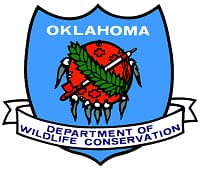Decemeber Brings Pheasant Season to Oklahoma

December to bring pheasant season to Oklahoma Drought relief and the most mild summer temperatures recorded in years have improved upland habitat this year, and that’s good news for pheasants. Brood count surveys showed an increase of about 20 percent from last year, which should improve hunting opportunities for sportsmen headed to the field for the Dec. 1 pheasant season opener.
Brood count surveys take place in August. They help biologist with the Oklahoma Department of Wildlife Conservation determine how many young pheasants survived the summer.
“These brood count surveys are the primary means we use to help us understand the annual population status of pheasant and to give us an idea of what the hunting season may be like,” said Scott Cox, upland game bird biologist for the Wildlife Department. “And thankfully, the results are up this year.”
Biologists attribute the improved brood count survey results to better available habitat thanks to increased rainfall and mild temperatures this summer.
“More rainfall means more cover and more vegetation that attracts more insects for young pheasants to eat,” Cox said. “Additionally, milder temperatures means better nesting success and better survival rates of young birds. In short, we got some much needed relief from the extreme drought and heat of the last few years, and all our upland birds such as pheasant and even bobwhite quail stand to benefit from it. The best thing we can do now as we head into the pheasant season is to go pheasant hunting. We have some birds to hunt, it’s fun and your hunting license dollars go back into conserving their habitat. And that’s what the Wildlife Department is committed to doing.”
While brood count survey results were up, Cox reminds hunters that overall numbers are down from the numbers traditionally enjoyed by sportsmen. During the crow count surveys, which are conducted in April and May well before the brood counts, biologists drive county roads and listen for crowing cock pheasants in search of mates. These surveys provide an idea of how many adult males survived through the winter. Results from the crow counts were down from last year. Cox said some of the decrease could be due to the fact that weather events in the region presented a smaller window of opportunity for biologists to complete their surveys.
“The number of adult birds that make it to the breeding season is important because they will serve as the breeding stock for the new broods, but it’s the number of young birds that they produce and that survive into the fall season that really makes or breaks the hunting season,” Cox said.
Both brood surveys and crow count surveys are conducted in Alfalfa, Beaver, Cimarron, Ellis, Garfield, Grant, Harper, Kay, Major, Noble, Texas, Woods, and Woodward counties.
The counties that traditionally have the highest pheasant densities during surveys are Alfalfa, Beaver, Cimarron, Grant and Texas counties.
First introduced to Oklahoma in 1911, the ring-necked pheasant thrives in the cultivated farmland habitat mixed with weedy fencerows and overgrown pastures common to northern and northwest.
Pheasant season runs Dec. 1 – Jan. 31 in Alfalfa, Beaver, Cimarron, Garfield, Grant, Harper, Kay, Major, Noble, Texas, Woods and Woodward counties, as well as that portion of Osage Co. west of State Highway 18 and the portions of Blaine, Dewey, Ellis, Kingfisher and Logan counties north of State Highway 51.
The daily bag limit for pheasants this year is two cocks, with a possession limit of four after the first day. Hunters must possess a hunting license and are required to wear appropriate hunter orange when the pheasant season overlaps with any deer gun season or holiday antlerless deer gun season. Complete details, including open wildlife management areas, are listed in the current “Oklahoma Hunting Guide,” which can be viewed for free online at wildlifedepartment.com or in print anywhere hunting licenses are sold.

